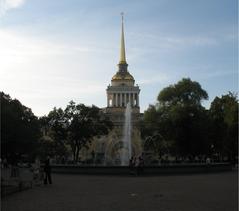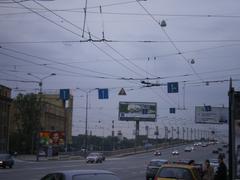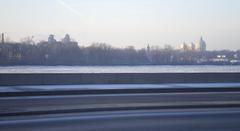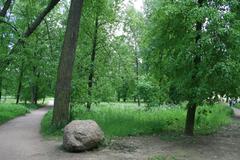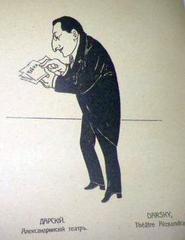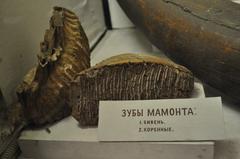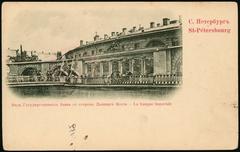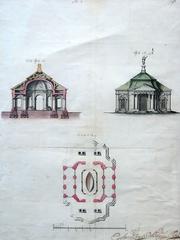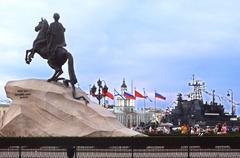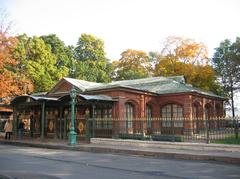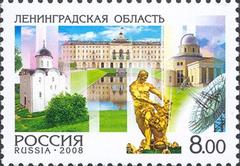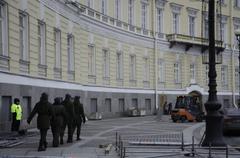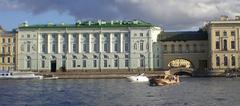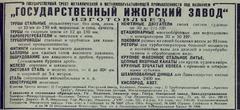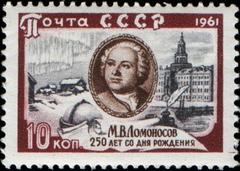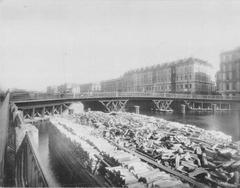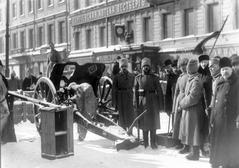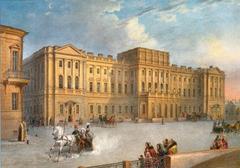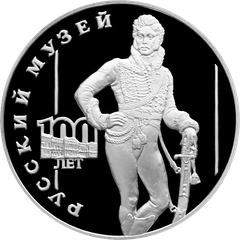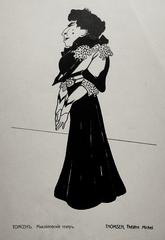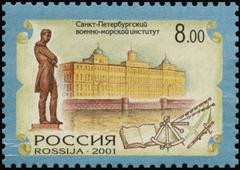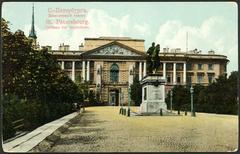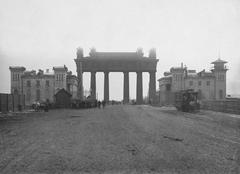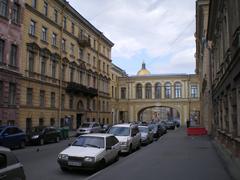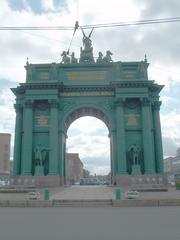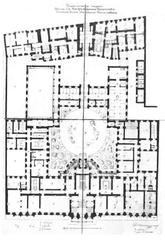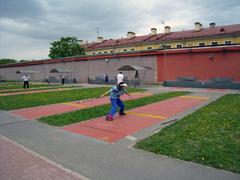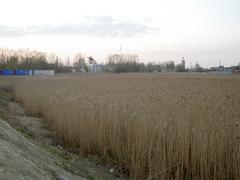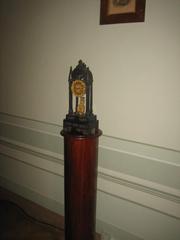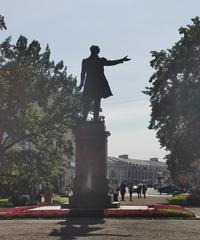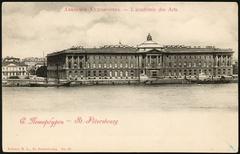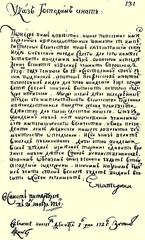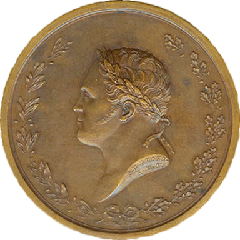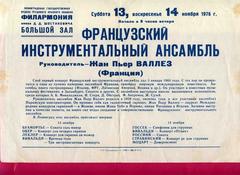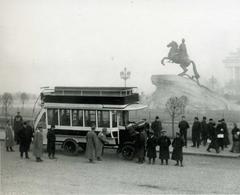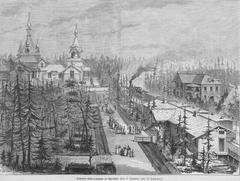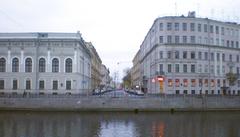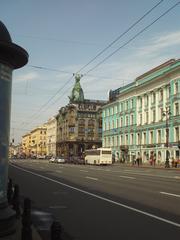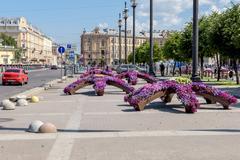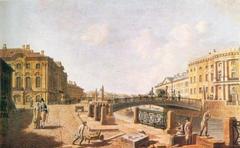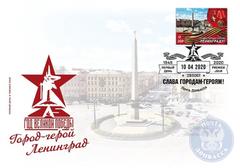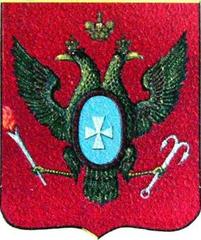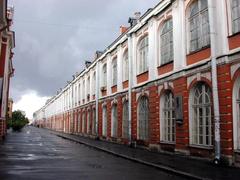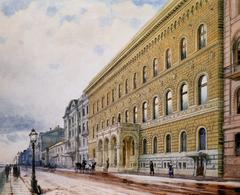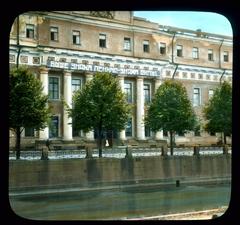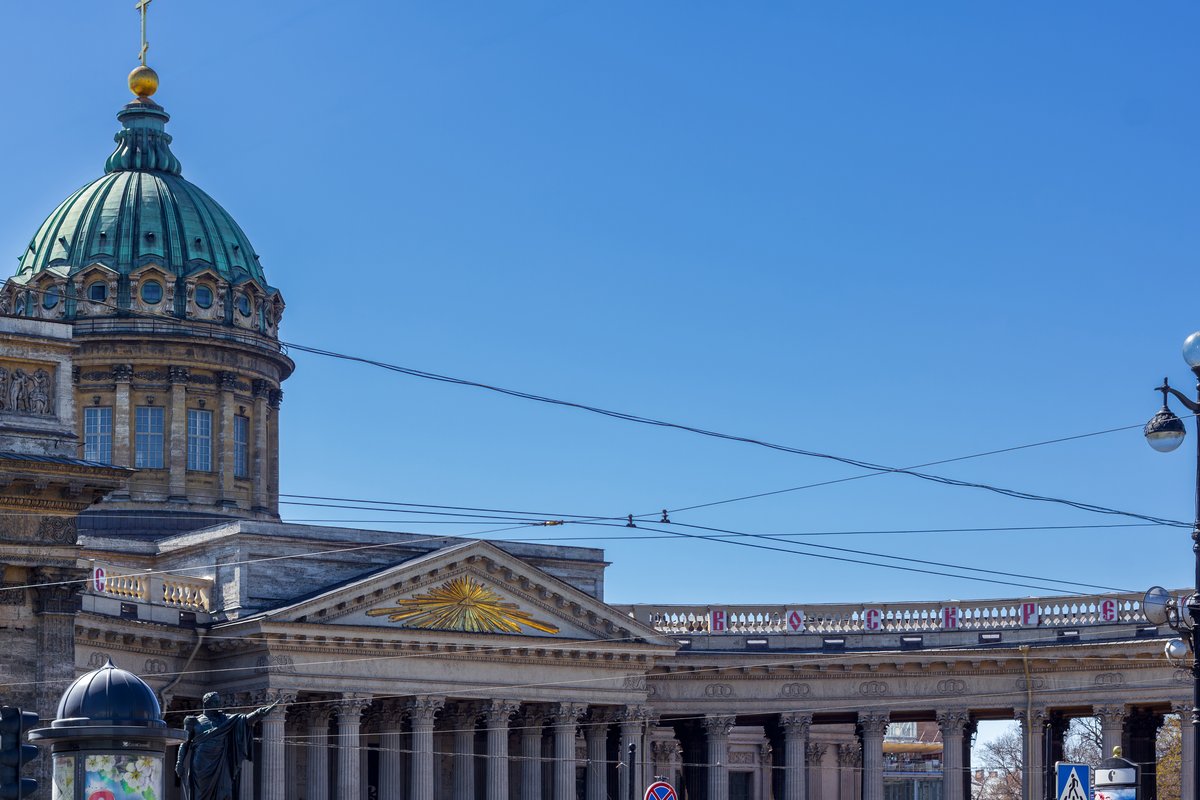
Visiting Hours, Tickets, and History of Kazan Cathedral in Saint Petersburg
Date: 17/07/2024
Introduction
Kazan Cathedral, also known as the Cathedral of Our Lady of Kazan, stands as an iconic symbol of Russian Orthodoxy and architectural grandeur in the heart of Saint Petersburg, Russia. Constructed between 1801 and 1811, this neoclassical marvel was designed by the renowned Russian architect Andrey Voronikhin, who drew inspiration from St. Peter’s Basilica in Rome (Saint Petersburg.com). Commissioned by Emperor Paul I, the cathedral was intended to serve as a national shrine dedicated to the Virgin of Kazan, one of the most revered icons in Russian Orthodoxy (Russia Beyond).
The cathedral’s historical significance was further cemented during the Napoleonic Wars when it became a symbol of Russian military triumph. Following the Russian victory over Napoleon in 1812, Kazan Cathedral housed numerous trophies and captured French banners, transforming it into a living museum of military glory. The final resting place of Field Marshal Mikhail Kutuzov, a key figure in the defeat of Napoleon, is located within the cathedral, adding to its historical reverence (Orthodox Christianity).
During the Soviet era, the cathedral’s religious functions were suspended, and it was repurposed as the Museum of the History of Religion and Atheism. However, with the fall of the Soviet Union, Kazan Cathedral underwent extensive restoration and was reinstated as a place of worship in 1991. Today, it continues to serve as the mother church of the Saint Petersburg Diocese and a major tourist attraction, drawing visitors with its rich history, architectural splendor, and spiritual significance (Visit Petersburg).
Table of Contents
- History of Kazan Cathedral, Saint Petersburg, Russia
- Cultural and Religious Significance
- Visiting Kazan Cathedral
- Preservation Efforts
- FAQ
History of Kazan Cathedral, Saint Petersburg, Russia
Origins and Construction
Kazan Cathedral, also known as the Cathedral of Our Lady of Kazan, is a prominent landmark in Saint Petersburg, Russia. The cathedral’s construction began in 1801 and was completed in 1811. It was designed by Russian architect Andrey Voronikhin, who drew inspiration from St. Peter’s Basilica in Rome. The cathedral was commissioned by Emperor Paul I, who envisioned it as a symbol of Russian Orthodoxy and a national shrine dedicated to the Virgin of Kazan, one of the most revered icons in Russia.
Architectural Design
The architectural design of Kazan Cathedral is a blend of Russian and European styles, reflecting the neoclassical trend of the time. The cathedral features a grand colonnade with 96 columns, forming a semicircle that opens onto Nevsky Prospekt, the main thoroughfare of Saint Petersburg. The interior of the cathedral is equally impressive, with its high vaulted ceilings, intricate mosaics, and numerous icons. The central dome, which rises to a height of 71.6 meters, is a dominant feature of the cathedral’s skyline.
Role in the Napoleonic Wars
Kazan Cathedral gained significant historical importance during the Napoleonic Wars. After the Russian victory over Napoleon in 1812, the cathedral became a symbol of national pride and military glory. It was here that the captured French banners and keys to the conquered cities were brought and displayed. The cathedral also served as the final resting place for the Russian military leader, Field Marshal Mikhail Kutuzov, who played a crucial role in the defeat of Napoleon. His tomb, located inside the cathedral, remains a site of reverence and national pride.
Soviet Era and Transformation
The history of Kazan Cathedral took a dramatic turn during the Soviet era. In 1932, the cathedral was closed to religious services and was repurposed as the Museum of the History of Religion and Atheism. This transformation was part of the Soviet government’s broader campaign to promote atheism and suppress religious practices. Many of the cathedral’s religious artifacts were removed or destroyed, and the building itself was used for various secular purposes.
Restoration and Reopening
With the fall of the Soviet Union, Kazan Cathedral underwent a significant restoration process. In 1991, the cathedral was returned to the Russian Orthodox Church, and religious services were resumed. The restoration efforts focused on repairing the damage caused during the Soviet era and restoring the cathedral to its former glory. Today, Kazan Cathedral stands as a symbol of resilience and revival, attracting both worshippers and tourists from around the world.
Cultural and Religious Significance
Modern-Day Relevance
In contemporary times, Kazan Cathedral continues to play a vital role in the religious and cultural life of Saint Petersburg. It serves as the mother church of the Saint Petersburg Diocese and hosts numerous religious ceremonies and events throughout the year. The cathedral is also a major tourist attraction, drawing visitors with its stunning architecture, rich history, and spiritual ambiance.
Notable Events and Celebrations
Kazan Cathedral is the site of several notable events and celebrations. One of the most significant is the annual procession on July 21, the feast day of Our Lady of Kazan. This event attracts thousands of pilgrims and visitors who come to honor the icon and participate in the religious ceremonies. The cathedral also hosts various concerts, exhibitions, and cultural events, further cementing its status as a key cultural hub in Saint Petersburg.
Visiting Kazan Cathedral - Hours, Tickets, and Travel Tips
Visiting Hours
Kazan Cathedral is open to the public daily from 8:00 AM to 8:00 PM. It is advisable to check the official website or contact the cathedral for any changes in visiting hours, especially during religious holidays and special events.
Tickets
Entrance to Kazan Cathedral is free of charge. However, donations are appreciated to support the maintenance and preservation of the cathedral. Guided tours may have a separate fee, and it’s best to book these in advance through the official website or local tour operators.
Guided Tours
Guided tours are available and provide valuable insights into the history, architecture, and religious significance of Kazan Cathedral. Tours are conducted in multiple languages, including English and Russian. Booking in advance is recommended, especially during peak tourist seasons.
Accessibility
Kazan Cathedral is accessible to visitors with disabilities. There are ramps and elevators available to assist those with mobility issues. It’s advisable to contact the cathedral in advance to ensure all necessary arrangements are made for a comfortable visit.
Travel Tips
- Transportation: The cathedral is located on Nevsky Prospekt, making it easily accessible by public transportation, including buses and the metro. The nearest metro station is Nevsky Prospekt/Gostiny Dvor.
- Footwear: Wear comfortable footwear, as there is a lot to explore both inside and around the cathedral.
- Dress Code: Be respectful of the religious setting; modest clothing is recommended, and photography may be restricted in certain areas.
- Timing: Consider visiting early in the day to avoid crowds and have a more peaceful experience.
Preservation Efforts
Preservation efforts for Kazan Cathedral are ongoing, with a focus on maintaining its structural integrity and historical authenticity. These efforts are supported by both the Russian Orthodox Church and various cultural heritage organizations. The cathedral’s status as a UNESCO World Heritage site underscores its global significance and the importance of preserving it for future generations.
FAQ
Q: What are the opening hours of Kazan Cathedral? A: Kazan Cathedral is open daily from 8:00 AM to 8:00 PM.
Q: How much do tickets to Kazan Cathedral cost? A: Entrance to the cathedral is free, but donations are appreciated.
Q: Is Kazan Cathedral accessible to visitors with disabilities? A: Yes, there are ramps and elevators available for visitors with disabilities.
Q: Are guided tours available? A: Yes, guided tours are available and can be booked in advance through the official website.
Q: What is the best way to reach Kazan Cathedral? A: The cathedral is easily accessible by public transportation. The nearest metro station is Nevsky Prospekt/Gostiny Dvor.
Conclusion
Kazan Cathedral is not merely an architectural gem but a living testament to Russia’s rich historical, cultural, and religious heritage. From its inception in the early 19th century to its pivotal role during the Napoleonic Wars and its transformation throughout the Soviet era, the cathedral has witnessed and withstood the vicissitudes of time. Its successful restoration and continuing function as a religious and cultural hub underscore its enduring significance in contemporary Russia.
Visitors to Kazan Cathedral can immerse themselves in its storied past, marvel at its neoclassical design, and participate in its vibrant present. Whether one is drawn by its historical artifacts, the spiritual ambiance, or its architectural beauty, Kazan Cathedral offers a profound and enriching experience. As a UNESCO World Heritage site, it remains a must-visit destination for anyone exploring the historical and cultural tapestry of Saint Petersburg (Saint Petersburg.com).
For those planning a visit, the cathedral’s central location on Nevsky Prospekt makes it easily accessible, and its free admission policy ensures that its treasures are open to all. By respecting its sanctity and adhering to the practical tips provided, visitors can ensure a respectful and memorable visit. As ongoing preservation efforts continue to maintain its splendor, Kazan Cathedral stands as a beacon of resilience, faith, and cultural unity, inviting all to explore its depths and appreciate its significance (Russia Beyond).

